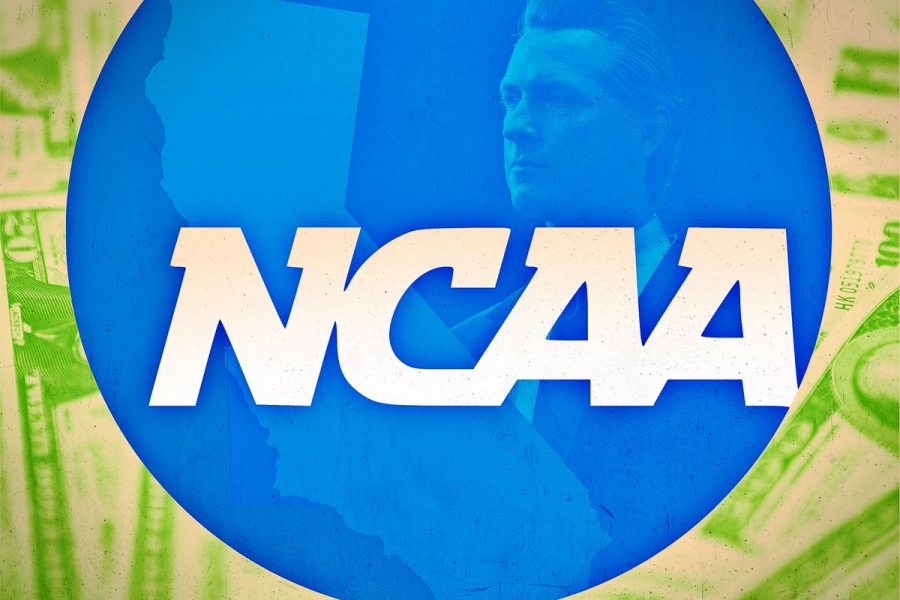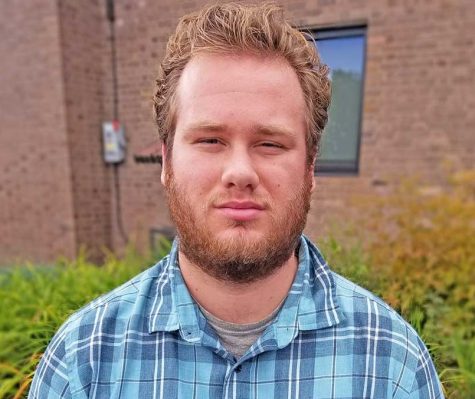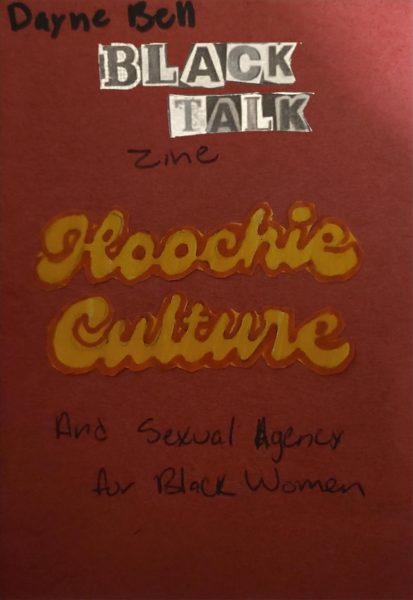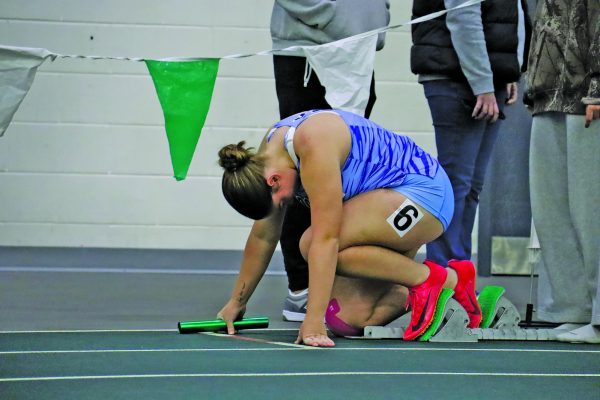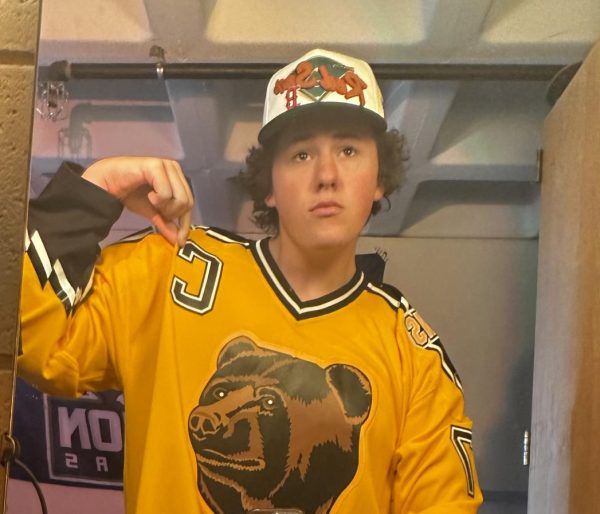College athletics: it’s Pay to Play
The National Collegiate Athletics Association (NCAA) is a multi-billion-dollar industry. It conduct collegiate sports and give student-athletes a chance to compete at the national level all around the United States. But a conversation that has been coming up for decades is the controversial topic of whether high-profile student-athletes should be paid.
The NCAA promotes itself as a non-profit organization that puts all the money it earns back into its athletes, both on and off the playing surface. But with such a huge amount of money going into NCAA, many people ask the question: where are student-athletes seeing the benefit financially and why can’t they make any actual cash for being an athlete, specifically at the Division I level?
Much of the money that the NCAA makes is from its annual Division I men’s basketball national championship tournament, also known as “March Madness.” This four-week tournament places 68 teams from across the nation into a playoff bracket and they compete for the National Championship.
These games take place in regional areas until the final four, where the four remaining teams square off, usually in indoor football arenas. Last year alone, over 72,000 people went to the final four and national championship games. On top of ticket sales for March Madness, the NCAA has marketing and broadcasting rights for the tournament that it sells to CBS, which in total comes to a profit of $821.4 million for a tournament.
The NCAA also makes $129.4 million for championship ticket sales, except from Division I football teams affiliated with the College Football Association. The rest of its revenue comes from small things like memberships dues that schools pay to be affiliated with the NCAA.
With all that money, there is an argument that NCAA could afford to pay student-athletes, but the root of the question of why student-athletes should or shouldn’t be paid comes from the relationship between the colleges and universities and their student-athletes.
One school to look at is Louisiana State University (LSU). According to a tweet from Ross Dellenger, former beat writer that followed LSU, in their 2016-2017 academic year, there were only three out their 17 NCAA-sponsored sports that made any profit: football with $56.097 million, men’s basketball with $1.619 million, and baseball with $569,148. The 14 other NCAA sponsored sports cost the school close to $23 million combined just to operate at the Division I level.
Volleyball, tennis, swimming, track and field, and others usually don’t don’t get the huge crowds and marketing/television deals that football and basketball get, thus less revenue going for those teams. Revenue from football, basketball, and the NCAA then step in to help cover those expenses so that many other sports at that insitution can continue. But say if just football money alone covered all the teams that saw a financial loss in the 2016-2017 calendar year, they would still have over $33 million to spend on operations of their specific program. $33 million is still a lot of money, so the question is… where does it all go?
One place to look at is in facilities. In 2019, the LSU football program unveiled its new state-of-the-art locker room, which cost the program and the school around $28 million. This renovation had sleeping pods at each player’s space, a pool, and a mini-theater, just to name a few. This project also had funds coming from alumni, with former LSU football star Tyrann Mathieu donating $1 million to the project, among others.
Another place to look at is the coaches. Days after Ed Orgeron, LSU football head coach, won the 2020 National Championship, he was awarded a six-year, $42-million dollar contract extension. This contract puts him in the area of other highly paid coaches, such as Clemson’s Dabo Swinney and Alabama’s Nick Saban, who made around $9 million each last year.
With all this money that is being thrown around for coaches and facilities, not a single cent is given to players… well, not entirely. Football programs tend to have up to 85 players under full scholarship, including room and board. For non-scholarship students to go to LSU, it costs around $24,136 for in-state and $40,813 for out-of-state, so scholarship student-athletes do end up saving thousands of dollars to get an education just for being an athlete. When traveling to away games, athletes don’t spend any money for travel, lodging, and food, which can also cost thousands of dollars.
College athletes do see financial benefits, but there is an argument to be made that student-athletes don’t get nearly enough as they should. Former Michigan University basketball player Jalen Rose, who was on the “Fab Five” team, a group that revolutionized college basketball and pop culture in the mid-90s, said on a radio show that “It’s indentured servitude. I’m playing for a coach that is getting millions from the university and gets money for TV and radio [spotlights], off our sweat equity.”
While many of these student-athletes are seeing benefits for playing intercollegiate athletics at the Division I level, in terms of total benefit, the coaches and the school itself see most of the benefit compared to the athletes. While college athletes are saving thousands, coaches and the school are making millions from these athletes’ image and likeness.
A study conducted by Athletic Director U and Navigate Research that predicted that LSU’s Heisman Trophy quarterback and potential NFL first overall draft pick Joe Burrow would have made around $700,000 if he were allowed to sell advertisements, endorse products and leverage his social media presence for individual profit during the 2019-2020 season. In Burrow’s case, while he’s saving around $40,000 for a year’s worth of tuition, room, and board, he’s still losing out on potentially $660,000 that he could make through his image and likeness.
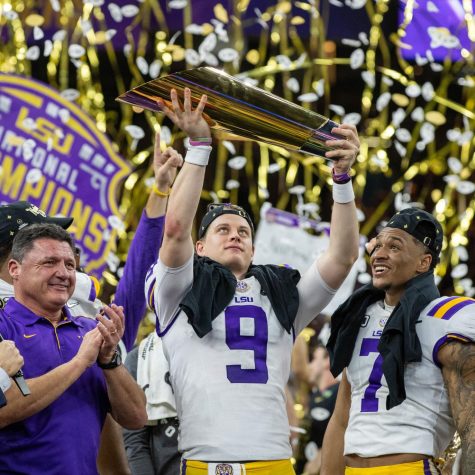
Joe Burrow and the LSU Football team celebrating their national championship win over Clemson in January 2020
For Burrow, who may be making millions when he’s drafted, the money seems negligible. However, other athletes, who play intercollegiate athletics who have their peak earning years while in college and struggle to make it into the professional leagues, could use that money.
One player that comes to mind is football running back Marcus Lattimore. He played for the University of South Carolina, which at the time was one of the top programs in the Southeastern Conference (SEC), arguably the best conference in the nation for college football. In his freshman year, he rushed for over 1,100 yards and scored over 19 total touchdowns, but in his sophomore and junior years as a college player, he sustained major injuries that derailed his career.
Fortunately for him, he was drafted in the fourth round and was able to sign a contract worth close to $3 million, but imagine the money he could have made in his freshman year if he had been able to profit from his image and likeness. You can easily point to him and many others that their peak earning years as an athlete are during college, and have a hard time making money after their collegiate playing days are over, especially since less than one percent of all college athletes make the pros.
The battle over image and likeness within the NCAA has gone to court several times in the past 11 years. The first battle was with Ed O’Bannon, who was a former college basketball player at UCLA in the 90s who sued the NCAA over image and likeness in 2009, as he was featured in an EA Sports college basketball video game. He granted no permission for the NCAA or EA Sports to use his likeness in the video game, and he received no compensation at all, well after his college days were over. In 2014, a district court ruled in favor of O’Bannon that the NCAA found themselves violating an antitrust law. The decision still didn’t find that the NCAA should be held responsible for paying college athletes but left a dent in the reputation of the NCAA as an organization.
Then in 2014, a new case surrounding amateurism and the NCAA popped up, as Martin Jenkins and his team went against the NCAA. In Jill Ingles’ article, “What You Need to Know About Jenkins v. NCAA,” she states that “The plaintiffs seek a free market in which member institutions can pay what they deem appropriate to student-athletes for commercial use of their name, image and likeness. Plaintiffs also cite the discrepancy in statements that athletic departments are not flushed with money while coaches are being paid millions of dollars and new training facilities and stadia continue to be built.”
On Sept. 30, 2019, California signed into law “The Fair Pay to Play Act,” which would allow collegiate athletes to acquire endorsements and sponsorships while still maintaining athletic eligibility in the state. While the NCAA opposed the bill, their Board of Governors directed divisions to start looking at creating flexibility in name, image and likeness rules, with a potential vote on legislation coming in January of 2021. Michael Drake, president of Ohio State University and chair of the NCAA’s Board of Governors, stated, “We must embrace change to provide the best possible experience for college athletes. Additional flexibility in this area can and must continue to support college sports as a part of higher education.”
With the back-and-forth battle of paying college athletes continues on, it looks like change in favor of the college athletes will be coming to many schools across the nation. There is still a lot that can happen in this process, but with this path, it can lead to a huge shakeup of how the NCAA and its member school use their money.


